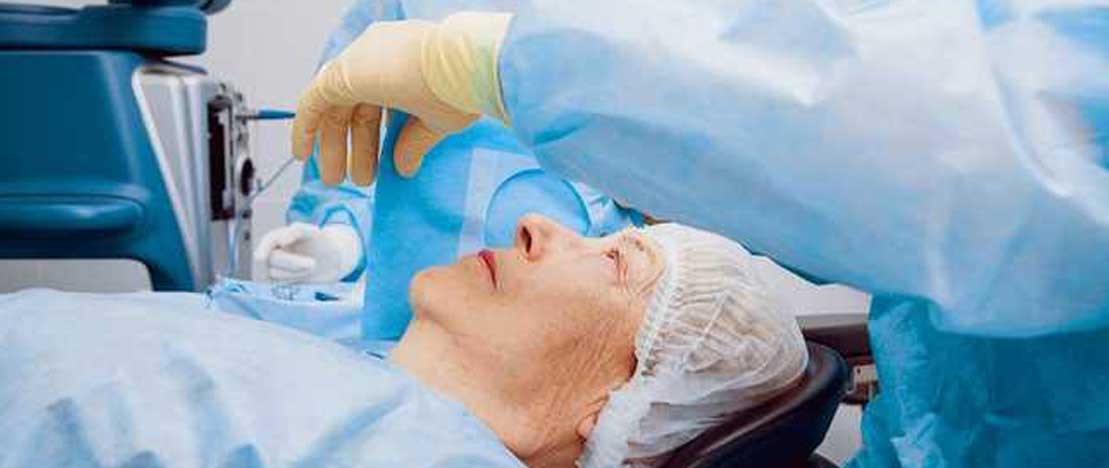
Myopia
Nearsightedness, or myopia, as it is medically termed, is a vision condition in which people can see close objects clearly, but objects farther away appear blurred. People with myopia can have difficulty clearly seeing a movie or TV screen, a whiteboard in school or while driving.
Myopia occurs if the eyeball is too long or the cornea (the clear front cover of the eye) is too curved. As a result, the light entering the eye isn't focused correctly, and distant objects look blurred
Hypermetropia
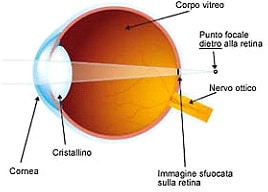
Hypermetropia is a defect of vision that causes the impossibility for rays of light to be focused on the retina, but behind it. The main cause for this defect is the insufficiente eye lenght.
A lot of people suffer from hypermetropia without even knowing it, because the eye automatically compensate this defect. The continous effort to try to see clean images, can cause migraines that are rarely linked to eye’s problems. Hypermetropia gets noticed only when the eye cannot compensate any longer: vision becomes definitely blurred and people finally book an appointment to be checked out.
Lasik
LASIK stands for laser assisted in-situ keratomileusis. This is a highly popular form of eye surgery and is used to correct a range of refractive errors, such as astigmatism, myopia and hyperopia. LASIK is a type of refractive surgery and involves controlled and precise targetting of the corneal tissue with a special laser. Corneal tissue is removed, resulting in a reshaping which enables improved vision.
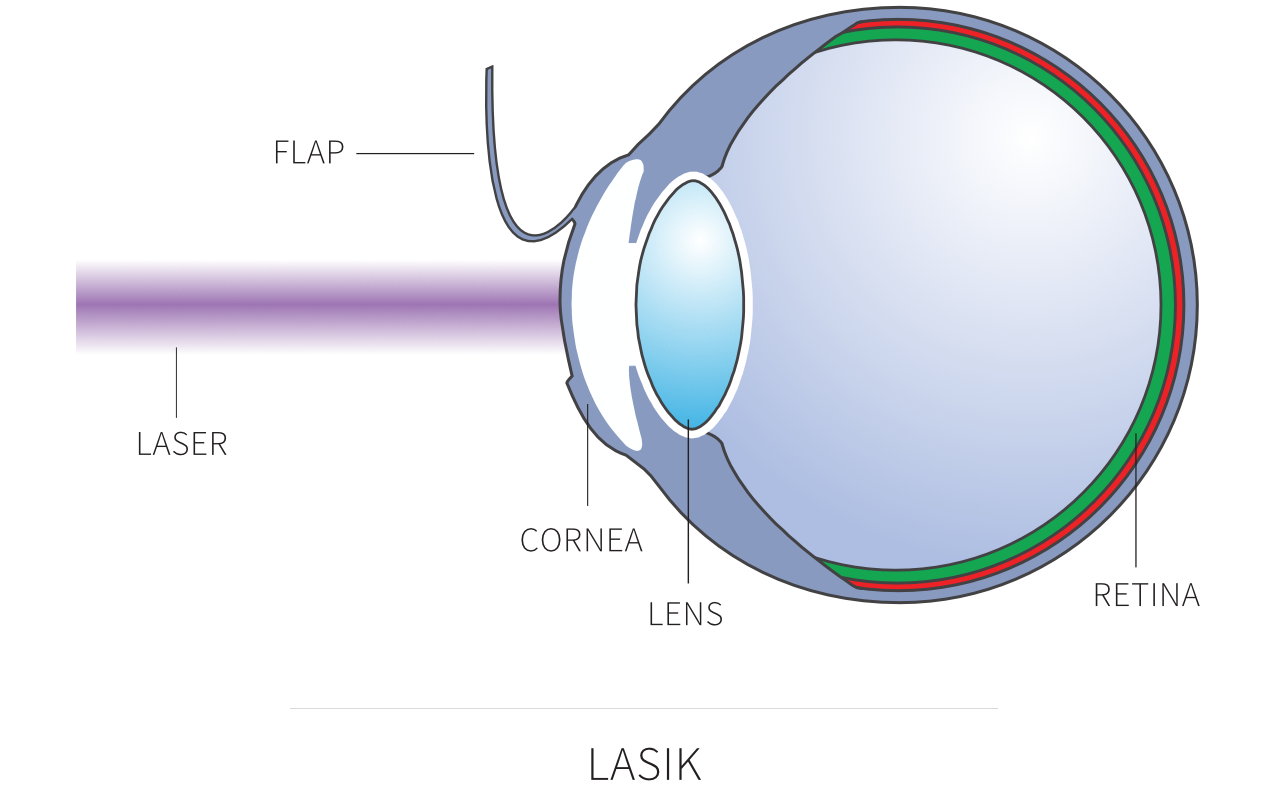
Refractive Surgery:
- Zyoptix
- Femto-LASIK
- PRK
- FLEx
- SMILE (Small Incision Lenticular Extraction).
- Phakic IOC
What is LASIK

LASIK stands for laser assisted in-situ keratomileusis. This is a highly popular form of eye surgery and is used to correct a range of refractive errors, such as astigmatism, myopia and hyperopia. LASIK is a type of refractive surgery and involves controlled and precise targetting of the corneal tissue with a special laser. Corneal tissue is removed, resulting in a reshaping which enables improved vision
Types of Lasik
CONVENTIONAL LASIK SURGERY
It corrects only spectacle number but does not correct any other distortion.
OPTIMIZED LASIK SURGERY
It corrects spectacle number and optimized correction of distortions to maintain a prolate natural like cornea, thus giving better vision at night and dim illumination.
Wavefront-optimized LASIK, is an enhanced version of conventional LASIK. It does not address pre-operative HOAs, but the laser ablation is adjusted, based on the patient's eye glasses prescription, to minimize any increase in spherical aberration induced by the treatment.
So whereas the goal of wavefront-guided LASIK is to identify and treat multiple HOAs (including spherical aberration) and refractive error during the corneal reshaping of the eye, the goal of wavefront-optimized LASIK is only to limit any increase in spherical aberration during the treatment of refractive error by the laser.
What Is Custom Lasik?
Custom LASIK is a procedure that involves the use of a wavefront analyzer which helps the surgeon to customize the LASIK procedure to every individual eye. Customized procedure enables a person to see clearer and shaper than before and thus improves the quality of vision.
Custom LASIK uses an equipment called the wavefront analyzer (aberrometer) to accurately measure the way light travels through the eye. The resulting map of the eye is then programmed into the laser, which then treats the eye, based on the personalized 3Dmap. Custom LASIK helps to treat “higher order” aberrations,which are tiny imperfections in the optical system of the eye. They have a significant impact on the quality of vision especially at night . In fact, higher order aberrations are not treatable with contact lenses, glasses or conventional LASIK.
Why go for Custom Lasik Procedure as compared to Conventional Lasik ?
The procedure for both custom LASIK and Conventional is the same but the pre assessment tests differ greatly. The wavefront analsyer used with custom LASIK brings a whole new level of knowledge and accuracy for the surgeon to perform this advanced procedure. This treatment has a significant impact on quality of vision and eliminates the problem of glare and halos at night. Topography, Aberrometry and Pachymetry are pre-operative tests required.
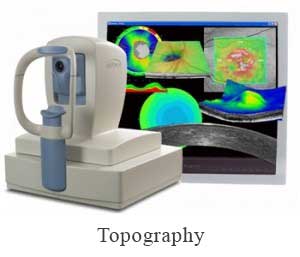
EPI-LASIK
Epi-LASIK is a newer laser eye surgery procedure that was developed to solve some of the potential problems with LASIK and LASEK. It’s somewhat of a cross between the two, but differs in a few key areas. With advent of Intralase Bladefree technique Epi-lasik is now obsolete.
Intralase Lasik – Bladeless Or Blade Free Lasik
Intralase is a 100% Blade - free approach using ultra high precision Femtosecond Laser for creating the corneal flap with more safety and accuracy. By eliminating the hand held Microkeratome blade used in traditional LASIK for corneal flap creation, patients enjoy highest level of safety. With Intralase, using a computer controlled laser the surgeon delivers rapid pulses of light to a pre-programmed depth and position within the cornea. Also Intralase is able to treat patients with thin corneas which otherwise would have been turned down for Blade assisted LASIK.

Presbyopic Lasik
Presbyopia-test1PreLEX treatment (Presbyopic Refractive Lens Exchange) is a lens replacement procedure wherein the natural lens is replaced with a multi-focal intra-ocular lens implant. This is done to improve vision for those generally above the age of 40, as it is after this age that one’s eye sight begins to naturally become weak—causing blurred near vision while reading or working at the computer, or blurred far vision when looking at something from a distance.
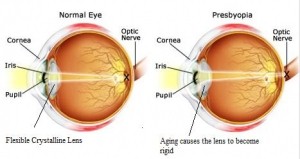
PREOPERATIVE TESTING
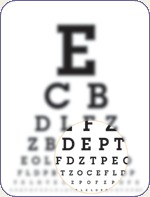
Once doctor determines that you are a good candidate for Custom LASIK or an alternative eye surgery, you will schedule a preoperative exam in our hospital. During this exam, your eyes will be dilated and our technicians will perform an array of diagnostic tests to gather all the data they need to develop the best possible surgical treatment plan.
Please Note: If you are a contact lens wearer, you must refrain from wearing contact lenses before this exam:
- Soft lenses - 1week before your exam
- Toric lenses - 1 weeks before your exam
- Hard or gas permeable lenses – 3 weeks for every decade of wear
Once you have completed your preoperative exam, you can have Custom LASIK eye surgery as soon as the following week! Effectively it takes only 15 minutes(30-60 seconds of laser time) to change your world from dependency on glasses to freedom from glasses.
ICL (implantable collamer lenses)
ICL are an alternative to LASIK and PRK eye surgery for severe myopia (nearsightedness)or high hypermetropia ( far sightedness) or in cases with very thin cornea where LASIK is contraindicated, and in some cases produce better and more predictable vision outcomes than laser refractive surgery. ICLs are clear implantable lenses that are surgically placed either between the the iris and natural lens without removing the natural lens. ICLs enable light to focus properly on the retina for clearer vision without corrective eyewear. Surgery is minimally invasive day care procedure which is very safe.

ICL Vs Contact lenses
 Implantable lenses function like contact lenses to correct the eye power. The difference is that ICLs work from within your eye instead of sitting on the surface of your eye. ICLs offer a permanent correction , where as contact lenses are temporary and need daily wear and removal. Unlike contact lenses, you can’t feel a phakic intraocular lens in your eye (much like you don’t feel a dental filling for a cavity) and, apart from regular eye exams, ICLs typically do not require any maintenance.
Implantable lenses function like contact lenses to correct the eye power. The difference is that ICLs work from within your eye instead of sitting on the surface of your eye. ICLs offer a permanent correction , where as contact lenses are temporary and need daily wear and removal. Unlike contact lenses, you can’t feel a phakic intraocular lens in your eye (much like you don’t feel a dental filling for a cavity) and, apart from regular eye exams, ICLs typically do not require any maintenance.
ICLs vs. LASIK Eye Surgery
- LASIK, which uses a computer-controlled laser to reshape the cornea, is the most popular refractive surgery to correct myopia, hyperopia and astigmatism, in part due to continual technological advancements such as wavefront custom LASIK and femtosecond laser technology.
- Not everyone is a candidate for LASIK, though. Contraindications to LASIK surgery include: a very high degree of myopia having a cornea that is too thin or irregular in shape; eye conditions such as keratoconus; and chronic dry eyes.
- ICL is an additive procedure whereas LASIK is an substractive procedure
Specialisation
- Lasik / Refractive Surgeries
- Cornea
- Cataract
- Keratoconus
- Retina Surgery
- Glaucoma Services
- Oculoplastic Surgery
Contact Information
Dr. Shaila Rajkumar Patel
MBBS, DNB Ophthal (Arvind Eye Hospital), F.C.R.S. (Fellowship in Cornea and Refractive Surgery), Fellowship in Advanced Phaco, MNAMS
301, 3rd Floor, MTNL Road, Near Don Bosco School, Mira Road (East), Thane - 401 107
+91 83698 81371

